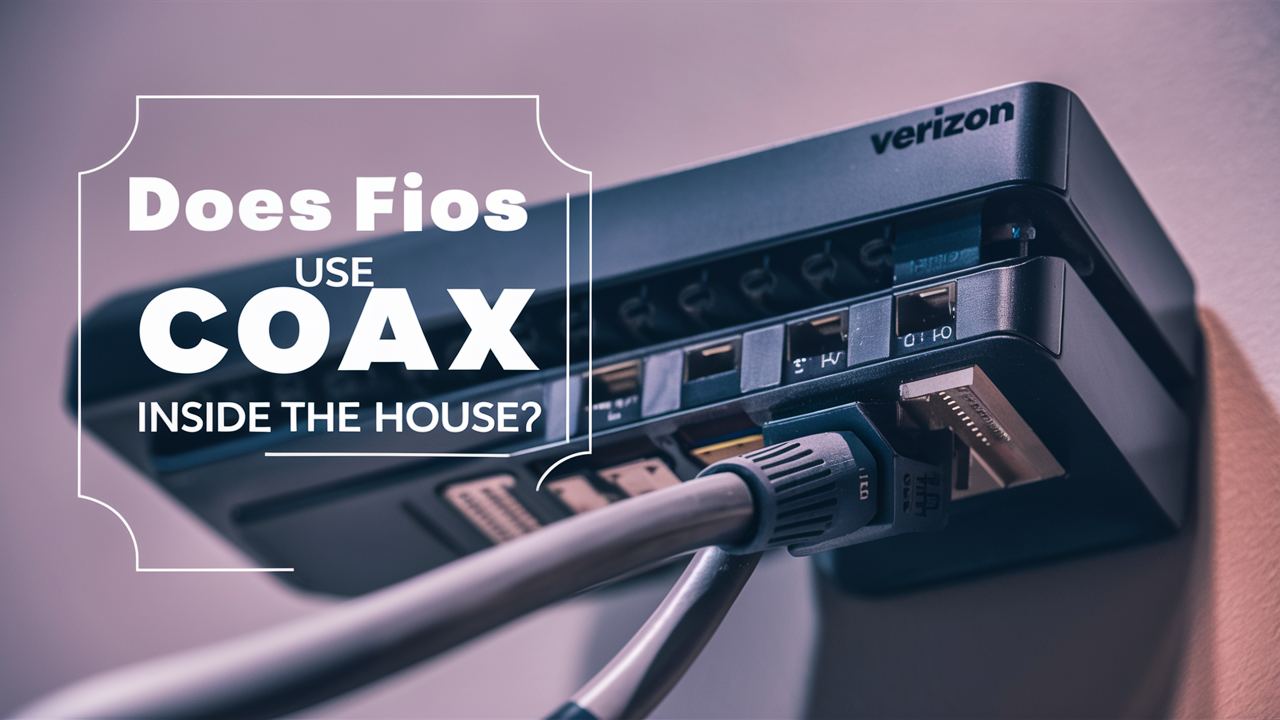Why is my Cox Data Usage so High?

Experiencing unexpectedly high Cox data usage? You're not alone. This comprehensive guide dives deep into the common culprits behind inflated data consumption and provides actionable steps to regain control over your internet bill. Discover how to identify the source of your data drain and implement effective solutions.
Understanding Cox Data Limits and Plans
Cox Communications, like many internet service providers (ISPs), implements data usage caps on many of its residential internet plans. These caps are designed to manage network traffic and ensure a certain level of service for all subscribers. Understanding your specific plan's data allowance is the crucial first step in managing your usage. Cox offers various plans, and their data thresholds can differ significantly. For instance, a basic plan might have a 1 TB (terabyte) data cap, while higher-tier plans might offer unlimited data or significantly larger allowances. As of 2025, the industry standard for many mid-tier plans hovers around 1.25 TB, with unlimited data becoming increasingly common for premium packages or as an add-on. Exceeding your data allowance can lead to throttling (slowing down your internet speed) or incurring overage charges, which can substantially increase your monthly bill. It's imperative to know your exact data limit to effectively monitor and control your consumption. You can typically find this information on your monthly bill, by logging into your Cox account online, or by contacting Cox customer support directly. Many users are surprised to learn they have a data cap, especially if they've been with Cox for a while and their plan has changed or been grandfathered in.
The Usual Suspects: Common Culprits of High Data Usage
Several activities consume significant amounts of internet data. Identifying which of these are prevalent in your household is key to pinpointing the source of your high Cox data usage. Let's break down the most common data-hungry activities:
Streaming Video and Audio
This is by far the biggest data consumer for most households. High-definition (HD) and 4K streaming are incredibly data-intensive. Here's a general breakdown of data consumption per hour for streaming services, based on 2025 estimates:
| Streaming Quality | Data Usage Per Hour (Approximate) |
|---|---|
| Standard Definition (SD) | 0.7 GB to 2.5 GB |
| High Definition (HD) | 2.5 GB to 7 GB |
| Ultra High Definition (4K) | 7 GB to 25 GB |
Consider how many hours of Netflix, YouTube, Hulu, Disney+, or other video streaming services your household consumes daily. If you have multiple devices streaming simultaneously, the data usage can skyrocket. Similarly, music streaming services, while less intensive than video, can still add up. An hour of Spotify or Apple Music in high quality can consume around 0.5 GB of data. If your family enjoys binge-watching or has a constant background of music playing, this is a prime suspect for high data usage.
Online Gaming
Modern online gaming involves more than just playing. Downloading large game updates, patches, and new game files can consume hundreds of gigabytes. The actual gameplay itself also uses data, though typically less than streaming video. A typical online multiplayer session might consume between 50 MB and 300 MB per hour, depending on the game's complexity and how much data it transmits. However, the real data drain often comes from:
- Game Downloads: New games can range from 20 GB to over 150 GB.
- Updates and Patches: Large game updates are released frequently and can be tens of gigabytes in size.
- Streaming Game Content: Services like GeForce NOW or Xbox Cloud Gaming stream games, which can be as data-intensive as HD video streaming.
If you have avid gamers in your household, especially those who frequently download new titles or large updates, this is a significant factor to consider.
Cloud Storage and Backups
Services like Google Drive, Dropbox, OneDrive, and iCloud are incredibly convenient for storing and syncing files. However, they can also be massive data consumers, especially if they are set to automatically sync large files or entire folders. Consider these scenarios:
- Automatic Photo/Video Backups: If your phone or camera is set to automatically upload all photos and videos to the cloud, and you take many high-resolution pictures or videos, this can quickly deplete your data allowance. A single minute of 4K video can be over 300 MB.
- Large File Syncing: Professionals or hobbyists who work with large video files, design projects, or extensive document libraries will see significant data usage from syncing these to the cloud.
- System Backups: Some cloud backup services perform full system backups, which can be tens or even hundreds of gigabytes, especially for the initial backup.
Check the settings on your cloud storage apps to ensure they are not set to sync over mobile data (if applicable) or to only sync during off-peak hours or when connected to Wi-Fi. For automatic backups, consider pausing them during peak data usage times or adjusting the upload quality.
Software Updates and Downloads
Operating system updates (Windows, macOS, iOS, Android), application updates, and driver updates can be surprisingly large. While essential for security and functionality, they can consume a substantial amount of data, especially if multiple devices in your home are updating simultaneously. A major Windows update can easily be several gigabytes, and even smaller app updates can add up over time. Downloading large software programs or files also contributes to this. If you have many devices or a household that doesn't manage updates carefully, this can be a hidden data drain.
Smart Home Devices
The proliferation of smart home devices – smart TVs, thermostats, security cameras, smart speakers, smart appliances – adds to your overall data consumption. While individual devices may use a small amount of data, collectively they can contribute significantly. Smart security cameras are particularly data-hungry, as they often stream video continuously or when motion is detected. A single 1080p security camera can use between 10 GB and 60 GB per month, depending on its activity and resolution. Smart speakers constantly communicate with cloud servers for voice commands and information retrieval. Even seemingly innocuous devices like smart light bulbs or thermostats send and receive small packets of data regularly.
Background App Activity
Many applications on your smartphones, tablets, and computers continue to use data even when you're not actively using them. This background data usage can include:
- Push Notifications: Receiving alerts from social media, news apps, and email services.
- Automatic Data Refresh: Apps that periodically check for new content or updates in the background.
- Location Services: Apps that use your location data.
- App Syncing: Apps that sync data or settings across devices.
While individual background data usage might be minimal, it can add up significantly across multiple devices and applications over a month. This is often an overlooked area where data is quietly consumed.
Video Calls and Conferencing
In today's connected world, video calls are commonplace for work, school, and staying in touch with loved ones. Services like Zoom, Microsoft Teams, Google Meet, and FaceTime consume considerable data. The data usage varies based on video quality, the number of participants, and whether video is being sent and received. As of 2025, estimates suggest:
| Service/Quality | Data Usage Per Hour (Approximate) |
|---|---|
| Zoom (SD) | 0.8 GB to 1.3 GB |
| Zoom (HD) | 1.6 GB to 2.7 GB |
| Microsoft Teams (SD) | 0.5 GB to 1 GB |
| Microsoft Teams (HD) | 1.2 GB to 2 GB |
| FaceTime (HD) | 0.5 GB to 1.5 GB |
If your household has multiple people participating in video calls for extended periods daily, this can be a substantial contributor to your data usage.
Unauthorized Usage and Hacks
This is a less common but potentially significant issue. If your Wi-Fi network is not secured with a strong password, others could be using your internet connection without your knowledge. This "piggybacking" can consume a considerable amount of data, especially if the unauthorized users are streaming, downloading, or gaming heavily. Furthermore, malware or botnets on your devices could be using your internet connection for illicit purposes, such as sending spam or participating in distributed denial-of-service (DDoS) attacks, all of which consume bandwidth.
How to Track Your Cox Data Usage
To effectively manage your data, you need to know how much you're using and where it's going. Cox provides several tools to help you monitor your data consumption.
Using the Cox App or Website
The most straightforward way to check your data usage is through your Cox account. Log in to the Cox My Account portal or use the Cox App on your mobile device. These platforms typically display your current month-to-date data usage, your data allowance, and often provide a breakdown of usage by device if you have compatible equipment and have set it up. They usually update usage data daily, so you can get a clear picture of your consumption trends. Many users find this to be the easiest and most accessible method.
Router-Level Monitoring
Your Wi-Fi router is the gateway to your internet connection, and many modern routers have built-in tools to monitor data usage. Access your router's administrative interface (usually by typing an IP address like 192.168.1.1 or 192.168.0.1 into your web browser) and look for a "Traffic Meter," "Bandwidth Usage," or "Data Usage" section. Some routers can provide real-time usage statistics or historical data. If your router doesn't have this feature, you might consider upgrading to a more advanced router that does, or installing custom firmware like DD-WRT or OpenWrt, which can offer extensive monitoring capabilities. This method provides a holistic view of all devices connected to your network.
Device-Specific Tracking
Most operating systems on your devices offer built-in tools to track data usage by application. This is invaluable for identifying which specific apps are consuming the most data on a particular device.
- On iOS (iPhone/iPad): Go to Settings > Cellular. Scroll down to see data usage for each app. You can also turn off cellular data for specific apps.
- On Android: Go to Settings > Network & Internet > Data Usage > App data usage. Here you can see data consumption per app and set data warnings or limits.
- On Windows: Go to Settings > Network & Internet > Data Usage. This shows data usage for the current billing cycle for all apps.
- On macOS: While macOS doesn't have a direct, easy-to-access built-in data usage meter per app, you can use third-party applications like "Little Snitch" or "NetUsage" to monitor network activity and data consumption.
By checking these settings on each of your devices, you can pinpoint which apps or services are the biggest data hogs on each individual machine.
Strategies to Reduce Data Consumption
Once you've identified the likely culprits, you can implement strategies to reduce your data usage. Here are some effective methods:
Optimize Streaming Settings
This is often the most impactful change you can make. Most streaming services allow you to adjust the video quality. Lowering the resolution from 4K or HD to Standard Definition (SD) can drastically reduce data consumption. For example, watching a movie in SD instead of 4K can save you anywhere from 5 GB to 20 GB per movie. Many apps have a "Data Saver" or "Low Quality" setting. For music streaming, opt for standard quality instead of high-fidelity options. If possible, download content over Wi-Fi when you plan to watch or listen offline later.
Manage Automatic Updates
Configure your devices and applications to download updates only when connected to Wi-Fi. Most operating systems and apps have settings for this. For example, on iOS, go to Settings > App Store and ensure "App Updates" is set to Wi-Fi only. On Android, open the Google Play Store > tap your profile icon > Settings > Network preferences > Auto-update apps > "Over Wi-Fi only." For Windows, you can configure active hours to prevent updates during certain times or adjust update settings. Schedule large downloads and updates for times when you are less likely to be using your internet for other activities, or during off-peak hours if your ISP offers them.
Limit Background Data Usage
On your mobile devices, review the background data settings for each app. Turn off background data refresh for apps that don't require it. For example, social media apps often refresh in the background to show you new content; if you don't need instant updates, disabling this can save data. On smartphones, you can often restrict background data usage on a per-app basis. On computers, be mindful of applications that might be syncing large files in the background. Consider pausing cloud sync services when you're approaching your data limit.
Secure Your Wi-Fi Network
This is critical to prevent unauthorized access. Ensure your Wi-Fi network has a strong, unique password using WPA2 or WPA3 encryption. Change the default router password and SSID (network name) to something more secure and personal. Regularly review the list of connected devices on your router's administration page. If you see any unfamiliar devices, disconnect them immediately and change your Wi-Fi password. A compromised network is a significant security risk and a potential data drain.
Consider Data-Saving Browsers and Apps
Some web browsers and apps are designed to reduce data consumption. Browsers like Opera have built-in data-saving modes that compress web pages before they are sent to your device. Some apps also offer "lite" versions or specific data-saving features. For example, Google Maps allows you to download maps for offline use, reducing the need to stream map data while navigating.
Educate Household Members
Data usage is often a shared responsibility. Have a family discussion about data limits and the importance of conserving data. Educate everyone on how to check their own device's data usage and the impact of their online activities. Simple awareness can lead to significant behavioral changes. Encourage them to download content over Wi-Fi, limit streaming quality when possible, and be mindful of background activity.
Understanding Cox Data Overage Charges
If you consistently exceed your data allowance, you'll likely face overage charges. Cox's policy for data overages can vary by region and plan. Typically, they charge a per-gigabyte fee for any data used beyond your cap. As of 2025, these charges can range from $10 to $30 per 50 GB increment, but it's crucial to check your specific plan details. For example, if your plan has a 1.25 TB cap and you use 1.5 TB, you could incur substantial extra costs. Cox may also implement throttling after you exceed your limit, meaning your internet speeds will be significantly reduced until the next billing cycle. It's essential to understand these potential penalties to avoid bill shock. If you're frequently hitting your data cap, it might be more cost-effective to explore other options, such as upgrading your plan or opting for an unlimited data add-on.
When to Consider a Plan Upgrade
If you've implemented all the data-saving strategies and are still consistently exceeding your data limit, or if your usage patterns have fundamentally changed (e.g., new smart home devices, more remote work/schooling involving video), it might be time to consider upgrading your Cox internet plan. Many ISPs, including Cox, offer plans with higher data allowances or unlimited data. While these plans come with a higher monthly cost, they can often be more economical than paying for frequent data overages. For instance, if you're consistently paying $50-$100 in overage charges per month, upgrading to an unlimited data plan for an additional $20-$40 might be a financially sound decision. Before upgrading, analyze your typical monthly data usage over a few months to determine the most appropriate plan. Cox also offers bundles that might include unlimited data, which could provide additional savings on other services like TV or phone.
Troubleshooting Persistent High Usage
If you've gone through all the steps and are still baffled by your high data usage, consider these advanced troubleshooting steps:
- Perform a Factory Reset on Your Router: Sometimes, router firmware can become corrupted, leading to inefficient data handling. A factory reset can resolve this, but remember you'll need to reconfigure your Wi-Fi settings.
- Scan for Malware: Run comprehensive antivirus and anti-malware scans on all your devices. Malware can consume significant bandwidth in the background without your knowledge.
- Check for Unseen Devices: Even if you've secured your Wi-Fi, double-check your router's connected devices list for anything unusual. Some sophisticated intrusions might be harder to detect.
- Contact Cox Support: If all else fails, reach out to Cox customer support. They can sometimes see more detailed network diagnostics from their end and may be able to identify issues with your connection or equipment that are contributing to high data usage. There might be a problem with your modem or line that's causing data to be transmitted or received erratically.
- Analyze Usage Patterns: Keep a detailed log of your data usage for a week or two, noting specific activities. This can help you identify subtle patterns or times of day when usage spikes unexpectedly, which might point to a specific device or service.
By systematically addressing potential data drains and utilizing the tools provided by Cox and your devices, you can effectively manage and reduce your internet data consumption. Understanding your plan, identifying the culprits, and implementing smart strategies are key to avoiding unexpected charges and maintaining control over your internet usage. Take proactive steps today to ensure your Cox data usage aligns with your needs and budget.
In conclusion, an unexpectedly high Cox data usage can be a source of frustration and unexpected costs. The primary drivers are typically high-definition streaming, online gaming updates, cloud backups, and unmanaged software updates. By leveraging the Cox app or website to monitor your usage, and by employing device-specific tracking, you can pinpoint the exact sources of data consumption. Implementing strategies such as optimizing streaming quality, managing automatic updates, securing your Wi-Fi network, and educating your household can significantly reduce your data footprint. If your usage remains consistently high, consider upgrading your plan to one with unlimited data, which may be more cost-effective than incurring overage charges. Don't let high data usage catch you by surprise; take control today.
Faq
Why is my Cox data usage suddenly so high?
Sudden spikes in Cox data usage can be caused by several factors. New devices connecting to your network, automatic software updates, cloud backups running more frequently, or increased streaming of high-definition video content are common culprits. Even background app activity on multiple devices can contribute significantly over time. Review your connected devices and their settings.
How can I check my current Cox data usage?
You can easily monitor your Cox data usage through the Cox website or the Cox app. Log in to your account online, and navigate to the 'My Account' or 'Internet' section. There, you'll typically find a dashboard displaying your current month's data consumption. The Cox app offers a similar, convenient way to track usage on your mobile device.
What activities use the most data on my Cox internet?
High-bandwidth activities are the biggest data consumers. This includes streaming video in HD or 4K (Netflix, YouTube, Hulu), online gaming, video conferencing, downloading large files or software, and using cloud storage services for backups. Even browsing websites with many embedded videos or high-resolution images can add up. The more you stream and download, the higher your usage.
Are there hidden data usage culprits I might be missing?
Yes, several less obvious factors can contribute. Smart home devices (like security cameras or smart assistants) often use data continuously. Background app updates on phones and tablets, automatic cloud syncing (e.g., Google Drive, Dropbox), and even some online advertisements can consume data without you actively using the internet. Regularly check device settings for background data usage.
How can I reduce my Cox data usage?
To reduce data usage, consider lowering video streaming quality, limiting background app activity and updates, disabling automatic cloud backups or scheduling them for off-peak hours, and monitoring connected devices. Using Wi-Fi for as many activities as possible when at home is crucial. Some devices allow you to set data limits for specific apps or the device itself.
What happens if I exceed my Cox data limit?
Cox typically has data usage policies. Exceeding your data allowance can result in extra charges on your bill, or your internet speeds may be throttled (slowed down) for the remainder of your billing cycle. It's essential to understand your specific plan's data cap and the consequences of exceeding it to avoid unexpected costs or performance issues.
Can multiple devices on my Wi-Fi increase my Cox data usage?
Absolutely. Each device connected to your Wi-Fi network contributes to your overall data usage. If you have many devices streaming, downloading, or running background processes simultaneously, your total data consumption will increase significantly. It's important to be aware of all active devices and their data habits, especially if you have a household with multiple users and gadgets.
How does 4K streaming impact my Cox data usage?
4K streaming consumes considerably more data than HD or standard definition. A single hour of 4K streaming can use up to 7 GB of data, whereas HD might use around 3 GB per hour. If you frequently watch content in 4K on multiple devices, this can rapidly deplete your monthly data allowance. Adjusting streaming quality can make a substantial difference.





